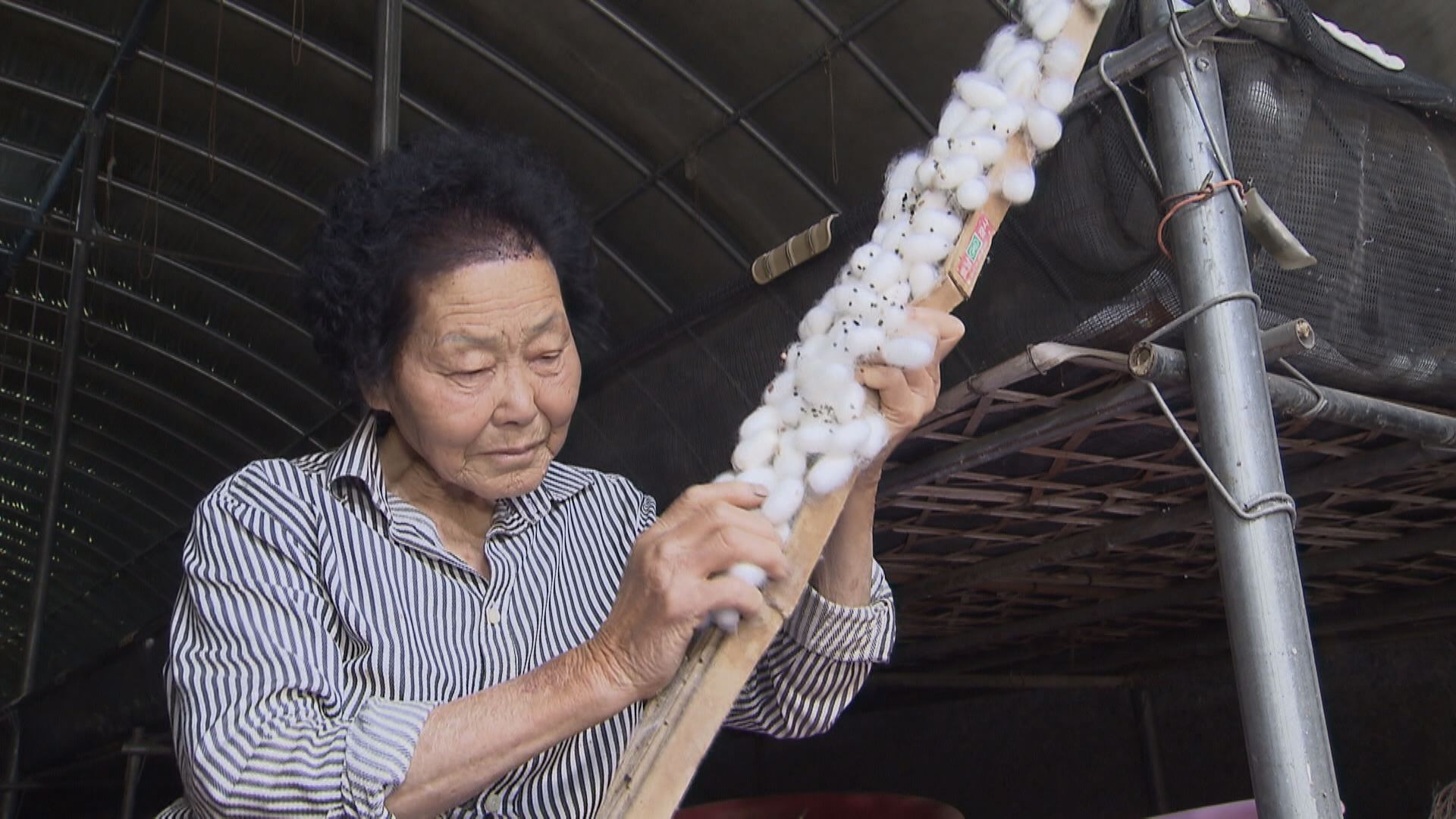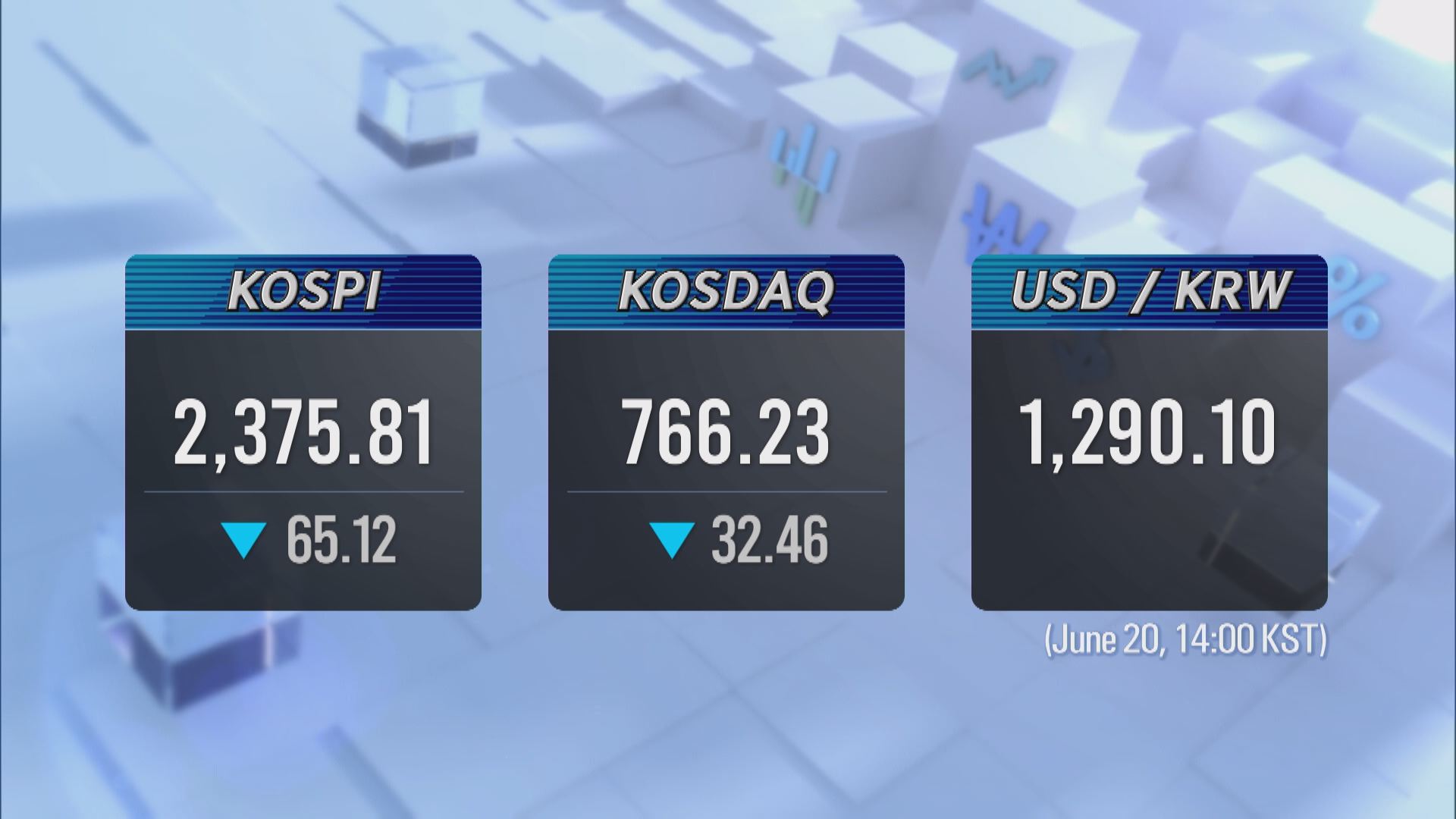EFFORTS TO PRESERVE SILKWORM CULTIVATION
입력 2022.06.20 (15:26)
수정 2022.06.20 (16:45)
읽어주기 기능은 크롬기반의
브라우저에서만 사용하실 수 있습니다.
[Anchor Lead]
Cocoons, also known as "bugs sent by heaven," are the raw material of silk. Efforts are underway in Korea to preserve silkworm cultivation, which has a long history.
[Pkg]
Silkworms that have just hatched are fed mulberry leaves crushed into tiny pieces. After three or four days of feeding, the silkworms fall asleep for one or two days. The process is repeated three times before they are fully grown up. Grown-up silkworms then spew out thread to protect themselves until they turn into chrysalises. These become cocoons, and the thread they spew out is silk. After dedicating half a century to rearing cocoons, creating ideal conditions for their growth, from temperature to humidity and feed, has become an intricate part of this farmer's daily life. That was possible thanks to a journal where the farmer documents the daily routine of cocoon cultivation.
[Soundbite] Lee Eun-keun(Boeun-gun Resident) : "As they say, a rolling stone gathers no moss. There must be consistency. But you shouldn't stop when things go wrong."
Sericulture flourished in Korea back in the 1970s. But it gradually declined with the development of substitute textiles and an increase in imports. Now it's on the brink of becoming a thing of the past without receiving recognition for its cultural value and contributions to humanity.
[Soundbite] Park Jong-seon(Chungbuk Research Institute of Cultural Heritage) : "This requires special skills and techniques. Very few farms can cultivate cocoons as people lose touch with old traditions and also due to aging population."
The Cultural Heritage Administration has designated mulberry and cocoon cultivation of Boeun, Chungcheongbuk-do Province as intangible cultural heritage project of the future, and is conducting surveys and documentation to preserve this sector.
Cocoons, also known as "bugs sent by heaven," are the raw material of silk. Efforts are underway in Korea to preserve silkworm cultivation, which has a long history.
[Pkg]
Silkworms that have just hatched are fed mulberry leaves crushed into tiny pieces. After three or four days of feeding, the silkworms fall asleep for one or two days. The process is repeated three times before they are fully grown up. Grown-up silkworms then spew out thread to protect themselves until they turn into chrysalises. These become cocoons, and the thread they spew out is silk. After dedicating half a century to rearing cocoons, creating ideal conditions for their growth, from temperature to humidity and feed, has become an intricate part of this farmer's daily life. That was possible thanks to a journal where the farmer documents the daily routine of cocoon cultivation.
[Soundbite] Lee Eun-keun(Boeun-gun Resident) : "As they say, a rolling stone gathers no moss. There must be consistency. But you shouldn't stop when things go wrong."
Sericulture flourished in Korea back in the 1970s. But it gradually declined with the development of substitute textiles and an increase in imports. Now it's on the brink of becoming a thing of the past without receiving recognition for its cultural value and contributions to humanity.
[Soundbite] Park Jong-seon(Chungbuk Research Institute of Cultural Heritage) : "This requires special skills and techniques. Very few farms can cultivate cocoons as people lose touch with old traditions and also due to aging population."
The Cultural Heritage Administration has designated mulberry and cocoon cultivation of Boeun, Chungcheongbuk-do Province as intangible cultural heritage project of the future, and is conducting surveys and documentation to preserve this sector.
■ 제보하기
▷ 카카오톡 : 'KBS제보' 검색, 채널 추가
▷ 전화 : 02-781-1234, 4444
▷ 이메일 : kbs1234@kbs.co.kr
▷ 유튜브, 네이버, 카카오에서도 KBS뉴스를 구독해주세요!
- EFFORTS TO PRESERVE SILKWORM CULTIVATION
-
- 입력 2022-06-20 15:26:13
- 수정2022-06-20 16:45:24

[Anchor Lead]
Cocoons, also known as "bugs sent by heaven," are the raw material of silk. Efforts are underway in Korea to preserve silkworm cultivation, which has a long history.
[Pkg]
Silkworms that have just hatched are fed mulberry leaves crushed into tiny pieces. After three or four days of feeding, the silkworms fall asleep for one or two days. The process is repeated three times before they are fully grown up. Grown-up silkworms then spew out thread to protect themselves until they turn into chrysalises. These become cocoons, and the thread they spew out is silk. After dedicating half a century to rearing cocoons, creating ideal conditions for their growth, from temperature to humidity and feed, has become an intricate part of this farmer's daily life. That was possible thanks to a journal where the farmer documents the daily routine of cocoon cultivation.
[Soundbite] Lee Eun-keun(Boeun-gun Resident) : "As they say, a rolling stone gathers no moss. There must be consistency. But you shouldn't stop when things go wrong."
Sericulture flourished in Korea back in the 1970s. But it gradually declined with the development of substitute textiles and an increase in imports. Now it's on the brink of becoming a thing of the past without receiving recognition for its cultural value and contributions to humanity.
[Soundbite] Park Jong-seon(Chungbuk Research Institute of Cultural Heritage) : "This requires special skills and techniques. Very few farms can cultivate cocoons as people lose touch with old traditions and also due to aging population."
The Cultural Heritage Administration has designated mulberry and cocoon cultivation of Boeun, Chungcheongbuk-do Province as intangible cultural heritage project of the future, and is conducting surveys and documentation to preserve this sector.
Cocoons, also known as "bugs sent by heaven," are the raw material of silk. Efforts are underway in Korea to preserve silkworm cultivation, which has a long history.
[Pkg]
Silkworms that have just hatched are fed mulberry leaves crushed into tiny pieces. After three or four days of feeding, the silkworms fall asleep for one or two days. The process is repeated three times before they are fully grown up. Grown-up silkworms then spew out thread to protect themselves until they turn into chrysalises. These become cocoons, and the thread they spew out is silk. After dedicating half a century to rearing cocoons, creating ideal conditions for their growth, from temperature to humidity and feed, has become an intricate part of this farmer's daily life. That was possible thanks to a journal where the farmer documents the daily routine of cocoon cultivation.
[Soundbite] Lee Eun-keun(Boeun-gun Resident) : "As they say, a rolling stone gathers no moss. There must be consistency. But you shouldn't stop when things go wrong."
Sericulture flourished in Korea back in the 1970s. But it gradually declined with the development of substitute textiles and an increase in imports. Now it's on the brink of becoming a thing of the past without receiving recognition for its cultural value and contributions to humanity.
[Soundbite] Park Jong-seon(Chungbuk Research Institute of Cultural Heritage) : "This requires special skills and techniques. Very few farms can cultivate cocoons as people lose touch with old traditions and also due to aging population."
The Cultural Heritage Administration has designated mulberry and cocoon cultivation of Boeun, Chungcheongbuk-do Province as intangible cultural heritage project of the future, and is conducting surveys and documentation to preserve this sector.
이 기사가 좋으셨다면
-
좋아요
0
-
응원해요
0
-
후속 원해요
0












![[속보] 상법 개정안, 여야 합의로 국회 본회의 통과](/data/layer/904/2025/07/20250703_831hGu.jpg)
![[속보] 국회, 김민석 총리 임명동의안 가결…국민의힘 표결 불참](/data/layer/904/2025/07/20250703_UCvuiM.png)



이 기사에 대한 의견을 남겨주세요.